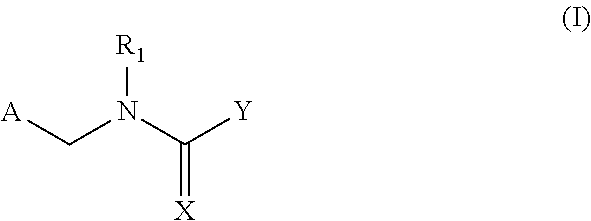Genetically Modified Seed Combined with Spore Forming Bacterium and Optional Insect Control Agents and Methods for Treating Plants
a technology of spore forming bacteria and genetically modified seeds, applied in the direction of biocide, coating, biochemistry apparatus and processes, etc., can solve the problems of affecting affecting the toxicity of certain chemical nematicides, and limiting or restricting their use. , to achieve the effect of improving the vigor and yield of plants
- Summary
- Abstract
- Description
- Claims
- Application Information
AI Technical Summary
Benefits of technology
Problems solved by technology
Method used
Image
Examples
example 1
[0048]Example 1 shows the crop yield results under nematode pressure for the combination of spore-forming bacterium and insect control agent applied to genetically modified seed (control+spore forming bacterium) compared to genetically modified seed with just an insect control agent (control). The genetically modified seeds in this comparison experiment were sourced from DELTA AND PINE LAND® available from Monsanto, which are cotton seeds that contains both glyphosate tolerance (Round-up Ready® trait) and insect tolerance (Bt gene) gene expressions. The insecticide was imidacloprid (Gaucho Grande) or imidacloprid & thiodicarb (AERIS®). The spore-forming bacterium was B. firmus. The nematode type varied from none, root knot nematode, reiniform nematode, and lance nematode. The concentration of insect control agents was 600 gm ai / liter, and in liquid form. The application rate of the insect control agents was 500-1000 gm ai / 100 kg. The concentration of B. firmus ranged from 100,000 to...
example 2
[0050]Example 2 shows the crop yield results under nematode pressure for the combination of spore-forming bacterium and insect control agent applied to genetically modified seed (control+spore forming bacterium) compared to genetically modified seed with just an insect control agent (control). The genetically modified seed in this comparison experiment were sourced from STONEVILLE™ available from Bayer CropScience, which are cotton seeds that contain both glyphosate tolerance (ROUND-UP READY® trait) and insect tolerance (Bt gene) gene expressions. The insecticide was imidacloprid (GAUCHO GRANDE®) or imidacloprid & thiodicarb (AERIS®). The spore-forming bacterium was B. firmus. The nematode type varied from none, root knot nematode and reniform nematode. The concentration of insect control agents was 600 gm ai / liter, and in liquid form. The application rate of the insect control agents was 500-1000 gm ai / 100 kg. The concentration of B. firmus ranged from 100,000 to 10,000,000 colony ...
example 3
[0051]Example 3 shows the crop yield results under nematode pressure for the combination of spore-forming bacterium and insect control agent applied to genetically modified seed (control+spore-forming bacterium) compared to genetically modified seed with just an insect control agent (control). The genetically modified seed in this comparison experiment were sourced from FIBERMAX® available from Bayer CropScience, which are cotton seeds that contains both glyphosate tolerance (ROUND-UP READY® trait) and insect tolerance (Bt gene) gene expressions. The insecticide was imidacloprid (GAUCHO GRANDE®) or imidacloprid & thiodicarb (AERIS®). The spore-forming bacterium was B. firmus. The nematode types were root knot nematode and reniform nematode. The concentration of insect control agents was 600 gm ai / liter, and in liquid form. The concentration of B. firmus ranged from 100,000 to 10,000,000 colony forming units per seed. The insect control agent and B. firmus were mixed together in an a...
PUM
| Property | Measurement | Unit |
|---|---|---|
| chemical fungicide | aaaaa | aaaaa |
| weight | aaaaa | aaaaa |
| composition | aaaaa | aaaaa |
Abstract
Description
Claims
Application Information
 Login to View More
Login to View More - R&D
- Intellectual Property
- Life Sciences
- Materials
- Tech Scout
- Unparalleled Data Quality
- Higher Quality Content
- 60% Fewer Hallucinations
Browse by: Latest US Patents, China's latest patents, Technical Efficacy Thesaurus, Application Domain, Technology Topic, Popular Technical Reports.
© 2025 PatSnap. All rights reserved.Legal|Privacy policy|Modern Slavery Act Transparency Statement|Sitemap|About US| Contact US: help@patsnap.com

